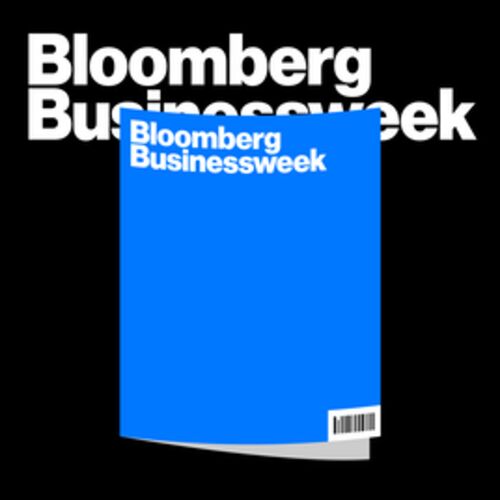Markets | Leadership] The new face of wealth: The rise of the female investor (ft. McKinsey Report)
The rise of female investors. A great wealth transfer means women will control $34 trillion—about 38 % of U.S. assets— and £11.4 trillion—about 47 % of EU assets—by 2030. Learn how this shapes purpose-driven investing, risk management, sustainable investing and calls for advisor diversity.
![Markets | Leadership] The new face of wealth: The rise of the female investor (ft. McKinsey Report)](https://images.unsplash.com/photo-1618662062577-1e1483c7b6c4?crop=entropy&cs=tinysrgb&fit=max&fm=jpg&ixid=M3wxMTc3M3wwfDF8c2VhcmNofDN8fGNhcGl0YWx8ZW58MHx8fHwxNzU5MzQ4ODIwfDA&ixlib=rb-4.1.0&q=80&w=1200)
Hi All,
Walking into the Bloomberg Women, Money, Power event, I coincidentally found a great podcast. One statistic stood out: by 2030, women will control $34 trillion—38% of U.S. investable assets. In Europe, that figure could reach $11.4 trillion (47% of AUM). The female investor is fast becoming the new face of capital. Here are the trends and action points that matter.
🏉Bottomline: This “great wealth transfer” means the new face of capital will be female, with a strong focus on purpose‑driven, sustainable investing and holistic financial advice.

*About this podcast and the book introduction: April Rudin of the Rudin Group and Nick Rice of Brunswick Group have co‑authored Wealth Management with a Difference, set for global release in late October. The book examines how generational shifts — particularly the rise of younger investors and women — are transforming wealth management, and it offers practical guidance on client relationships, strategy and technology for firms looking to adapt.
Executive Summary: The Rise of the Female Investor
By 2030, women are expected to control $34 trillion in U.S. investable assets (38%) and $11.4 trillion in Europe (47% of AUM). This shift is driven by higher earnings, longer life expectancy, and demographic change—making women the fastest-growing force in capital markets.
Key Dynamics
- Decision-makers: Over two-thirds of women already lead household finances; 80% are primary or joint income contributors. Most seek personalised, high-quality advice—56% prefer a certified planner, while only 7% would use robo-tools.
- Advisor gap: Despite this surge, only 18% of financial advisors and 24% of CFP® professionals are women, signalling a major mismatch between client base and advisory representation.
- Purpose-driven capital: Women consistently prioritise impact, ESG alignment, and philanthropy, favouring long-term resilience over speculative returns.
- Alternative allocations: Capital is increasingly flowing into private markets, digital assets, and retirement vehicles, though transparency and measurable outcomes remain key requirements.
- Stewardship lens: The shift is less a one-time transfer than a multi-decade transition, with women often stewarding wealth across generations before passing it on.
Strategic Imperatives
- Recruit & mentor: Expand the pipeline of female advisors to match client demand.
- Customise: Deliver solutions that align with women’s long-term goals, values, and legacy priorities.
- Educate: Invest early in financial literacy to build lasting relationships.
- Innovate: Offer sustainable finance and private-market products that meet transparency and impact standards.
👉 This is not simply the “great wealth transfer”—it is a great wealth transition. Women are redefining investment priorities, risk management, and the future of wealth creation.
McKinsey Report: The new face of wealth: The rise of the female investor (May 8, 2025)
Bottom Line: By 2030, women will control up to $34T in U.S. assets and $11.4T in Europe, reshaping the face of global wealth. Yet half of these assets remain unmanaged—representing a $10T opportunity for firms that adapt.
Key Findings:
- Acceleration: Women controlled $60T in 2023 (~34% of global AUM), growing 51% since 2018—outpacing overall market growth. Their share is projected to reach 40–45% of wealth in the U.S. & EU by 2030.
- Unmet potential: ~53% of female-controlled assets are unmanaged vs. 45% for men. Closing this gap = ~$10T opportunity by 2030.
- Behavioral shift: Women’s financial confidence has surged—Millennial women in Europe reporting comfort with investing rose from 45% (2018) to 67% (2023). Younger women are more cost-conscious, mobile, and willing to switch providers.
- Distinct goals: Women prioritize long-term security, health, and lifestyle stability over maximizing returns; they favor in-person advice, stable portfolios, and impact-aligned investing.
- Advisory gap: Only 18–23% of advisors are women in the U.S./EU, creating a disconnect between advisors and the rising female investor base.
Strategic Implications for Firms:
- Build diverse teams → Recruit and promote more female advisors/leaders to retain women across life events (divorce, widowhood).
- Engage early → Target younger women with digital, personalized, and educational offerings before wealth transfer events.
- Treat households as co-decision makers → Engage both partners equally to strengthen retention.
- Segment & personalize → Address female investor archetypes (e.g., “young engaged investors,” “advisor-dependent retirees”) with tailored products, channels, and engagement models.
- Shift to needs-based models → Move beyond wealth size to behavioral segmentation and values-based alignment.
Conclusion: The “great wealth transfer” is becoming a great wealth transition led by women. Firms that adapt advisory models, diversify teams, and engage women early will unlock multi-trillion-dollar growth. Those that don’t risk irrelevance as the new face of wealth turns away.


![AI] The Future of Work, Robotics & AI Infrastructure](/content/images/size/w720/2025/11/Screenshot-2025-11-22-074621.png)
![Culture Shocks] From Seoul to Toronto to NYC to London: Making Sense of My Journey Across Continents](/content/images/size/w720/2025/10/Emily-in-Paris.jpg)
![Obsidian Memo] When “The Diplomat” Made My Life Make Sense](/content/images/size/w720/2025/10/diplomat_ver2_xlg--1-.jpg)